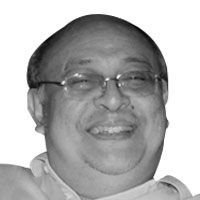Five Six

President Duterte has embarked on another battle, this time against an ingrained lending operation at the grassroots. Even during the campaign, he had expressed strong words against those who profit in what is generally known as 5/6.
What is 5/6 and why is it called such? It most likely originated in public markets where vendors borrow P5 in the morning to buy products they will sell for the day and the lender goes around in the late afternoon collecting P6. The P1 may seem little by way of paying the price of using the P5, but it is a shocking 20 percent a day.
The thing about it though is that there is no longer anything illegal about charging that usurious rate. The market has been freed. That is why the Justice Secretary is saying they will arrest the 5/6 operators for violating SEC rules that require registration and permits, not for usury.
But that’s the thing about 5/6 operations. They don’t get permits. They don’t use loan documents. It is part of the underground economy.
If the 5/6 operators get a SEC permit to legitimize their lending operations, they will have to keep records and report income to the BIR. They will also have to disclose the interest they charge to borrowers or end up violating the Truth in Lending Act. It serves its purpose by being in the shadows.
This is why I doubt they can stop 5/6. It is a service being provided because there is a market for it. When I was working for a bank, we did a study on why market vendors prefer to go to a 5/6 person rather than borrow from us.
It turns out the vendors are intimidated by banks, don’t like filling out forms and answering questions, prefer the convenience of having someone go around the market lending P5 in the morning and collecting P6 pesos in the afternoon. They don’t know how to compute interest rates and do not realize they are being charged an enormous interest rate.
Our market study also revealed that the common man is intimidated by a bank’s awesomely clean and imposing offices with tellers and bank officers dressed so well. They can’t imagine themselves going into a bank in their tsinelas or bakya and asking for a loan. They think they will just be shooed away.
Our bank president, Ramon “Ray” Orosa was so far ahead of his time when I worked with the bank he headed some 40 years ago. He was determined to tap this market of vendors, make some money out of lending to them and do them a favor in the process by offering much lower interest rates.
So we decided to rent market stalls and have bank employees dressed plainly (no ties, no barongs) do the exact same thing of going around offering loans in the morning and collecting payments towards late afternoon at what was then a legal interest rate plus service charge. The Moneyshop, as we called the project, worked. But there was a change in bank leadership and the project was discontinued.
Fast forward some 20 years later, a Bangladeshi banker won the Nobel Peace Prize for pioneering what he called a Grameen Bank. Today, our Bangko Sentral calls it microfinance. When we tried it under Ray Orosa’s leadership, it was just an experiment in social lending.
There are now many microfinance establishments in the country, the largest of which is called CARD or Center for Agriculture and Rural Development led by Jaime Aristotle Alip. DENR Secretary Gina Lopez also dabbled in microfinance when she headed ABS-CBN Foundation.
But the need for microfinance is so large that even if more and more of the mainstream banks and charitable foundations are getting into it, there is still plenty of room for the 5/6 operator to ply his trade. In the minds of most Filipinos, it is the Indian or the Bombay in his motorcycle who are mostly into 5/6. But my guess is that there are now many more Filipinos and Chinoys who are in it too. It is wrong to single out the “Bombay.”
What should be done about 5/6? Arresting the lenders and subjecting them to something like the anti-drug lord “tokhang” isn’t going to work. Many will just lie low for a while or pay off the local police and continue as usual. In the hand-to-mouth world where most of our people live, the 5/6 operators provide a needed service. For as long as there is a need, they will be there.
In a sense, it is all about financial inclusion. The vast majority of our people do not even have bank accounts. They don’t know how to deal with banks and other formal financial institutions. Their individual needs for the day are small, too small for the formal institutions to bother with.
Maybe the BSP and the banking community will have to be more creative in providing an alternative service to the 5/6 operator. Maybe we need better savings and loan cooperatives. In some companies, employees band together in an informal group they call paluwagan wherein everyone contributes to a fund and they take turns borrowing from it.
The 5/6 operators are probably most active in public markets because there is no alternative source of working capital for vendors. It is time for the big banks to check out Ray Orosa’s “moneyshop” concept and give it a fresh try.
The trade department has announced a small business lending program they are launching worth P1 billion. They are going to lend anywhere from P5,000 to P300,000 to small entrepreneurs. It is a good idea, but I wonder how it will be implemented.
From our experience in Moneyshop, people want to borrow for the day’s working capital and pay for it at day’s end. I am not sure there are many who can see from a longer time horizon and also have enough skills to manage more money than a day’s business requires.
They have to do a lot of training to make sure government funds are not wasted. And the fact that these are government funds, many will think there is no need to pay back. Local politicians will likely encourage that kind of thinking and use the funds as some kind of pork barrel funds.
Perhaps DTI can course the P1 billion fund to already established microfinance institutions who know how their clients behave. Microfinance lending usually charges higher than the usual loans provided by banks because they have higher operating costs and theoretically, higher risk. But I remember Gina reporting to the Lopez management committee many years ago that the repayment rate is quite high.
I was involved in another social credit scheme under Ray Orosa that used social ties or relationships as the effective collateral for loans. When someone borrows money, everyone in the group guarantees payment. Unless one is ready to be a social outcast, running away from a loan obligation is not an option.
One more thing… we found out that it was better to lend money to the wife who is more inclined to use it to fund a micro business to augment family finances. The husbands are more likely to use the funds to bet in the cockpit and the drinking bout thereafter.
President Duterte is to be lauded for raising a valid social concern and going after 5/6 operations. But as in the drug war, using the police and the judicial system alone isn’t going to work.
Merely doling out money to replace the 5/6 operators isn’t going to be sustainable. There is a need to examine the need and how that need can be satisfied by means other than 5/6. Unless the government program mimics the way 5/6 operators do their business, it is guaranteed to fail. After all, the 5/6 is well entrenched in our social system and change will be difficult.
That P1-billion micro lending program is well intentioned. But its implementation that counts… Care must be exercised not to waste the money of taxpayers through corruption and inefficiency. Good intentions are great. But greater still are proposed solutions that actually work. As always, the devil is in the details.
Boo Chanco’s e-mail address is [email protected]. Follow him on Twitter @boochanco
- Latest
- Trending





























